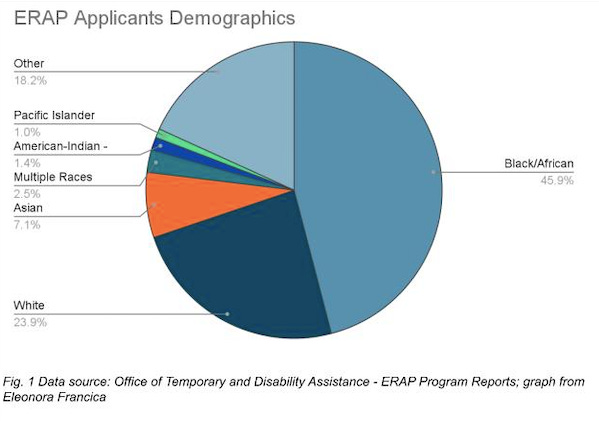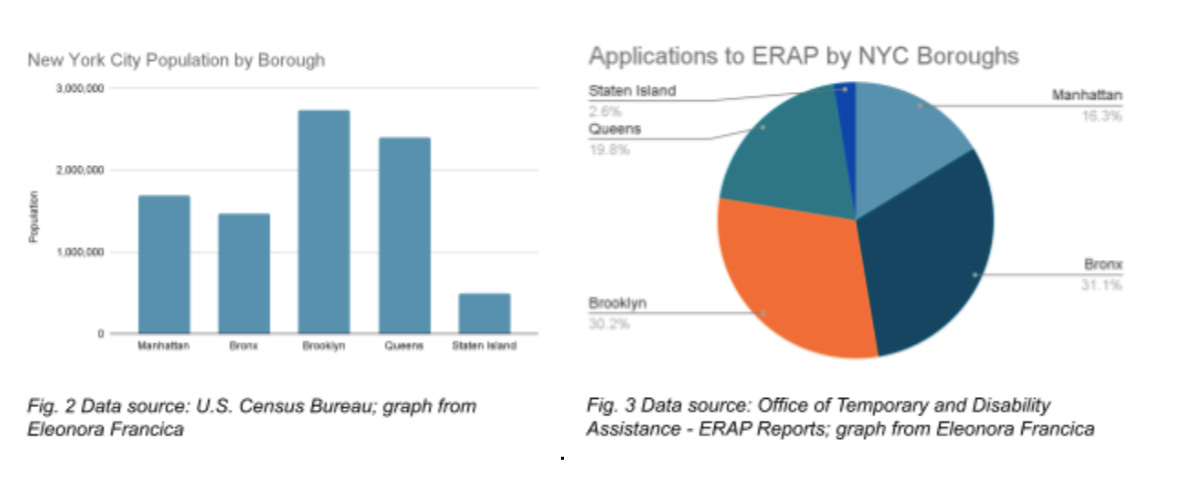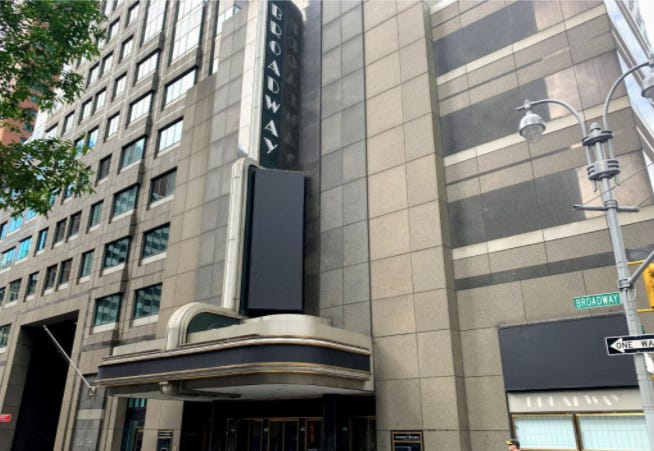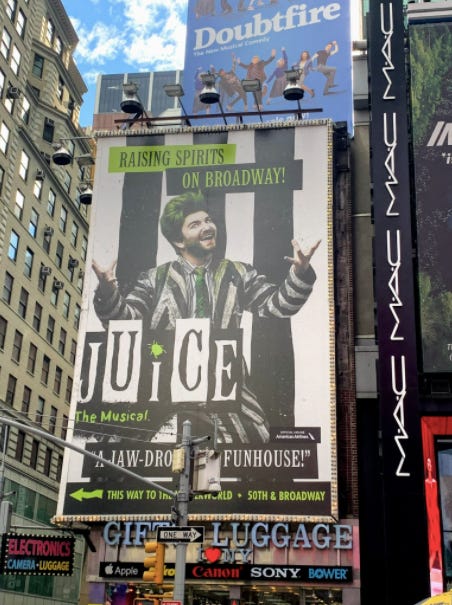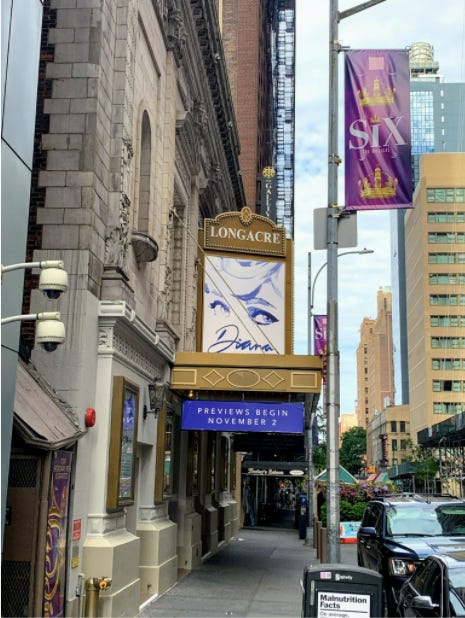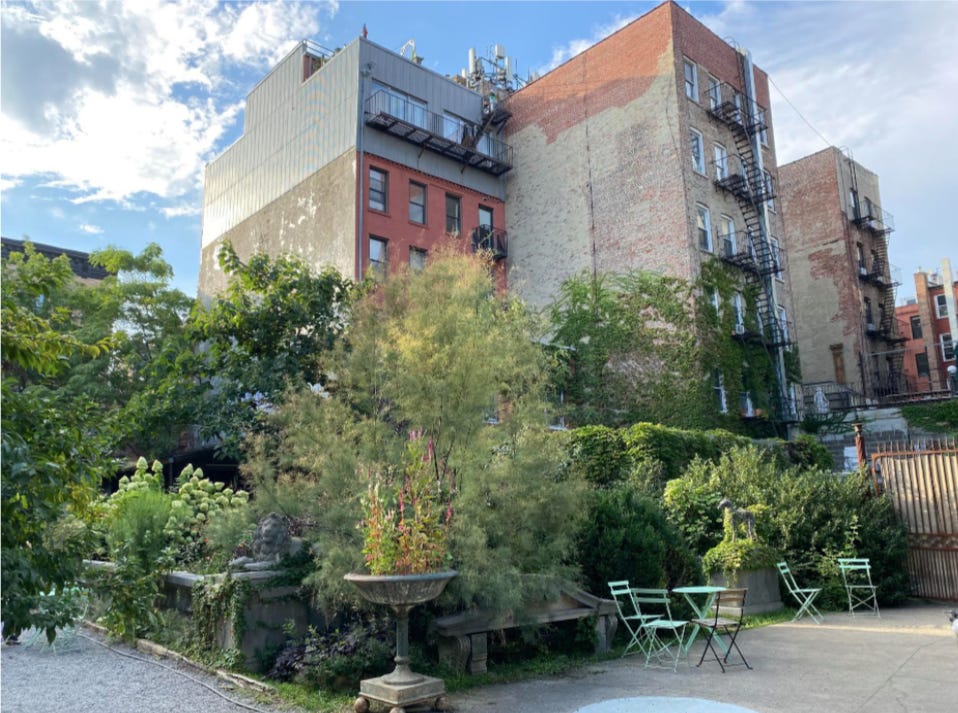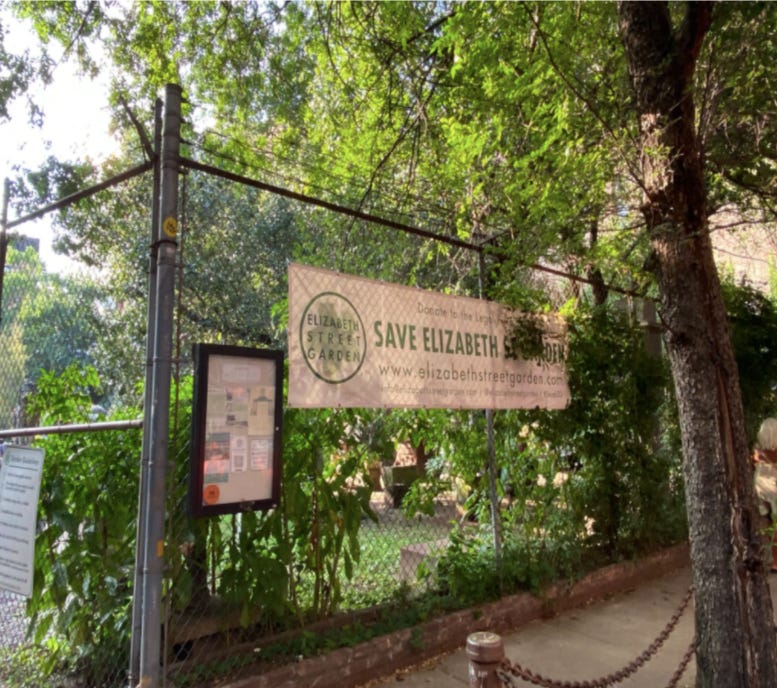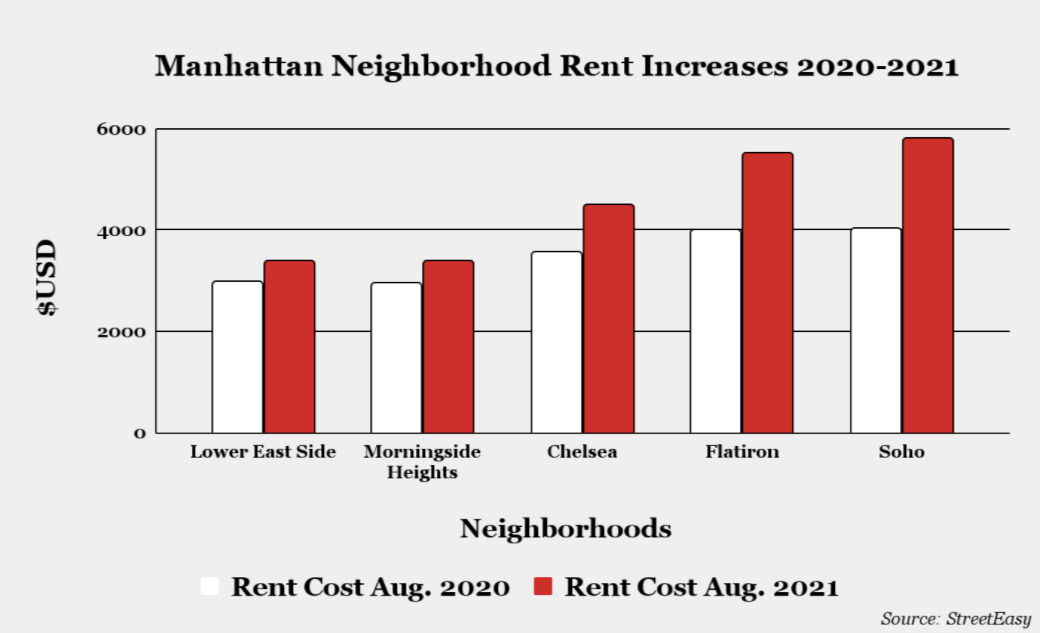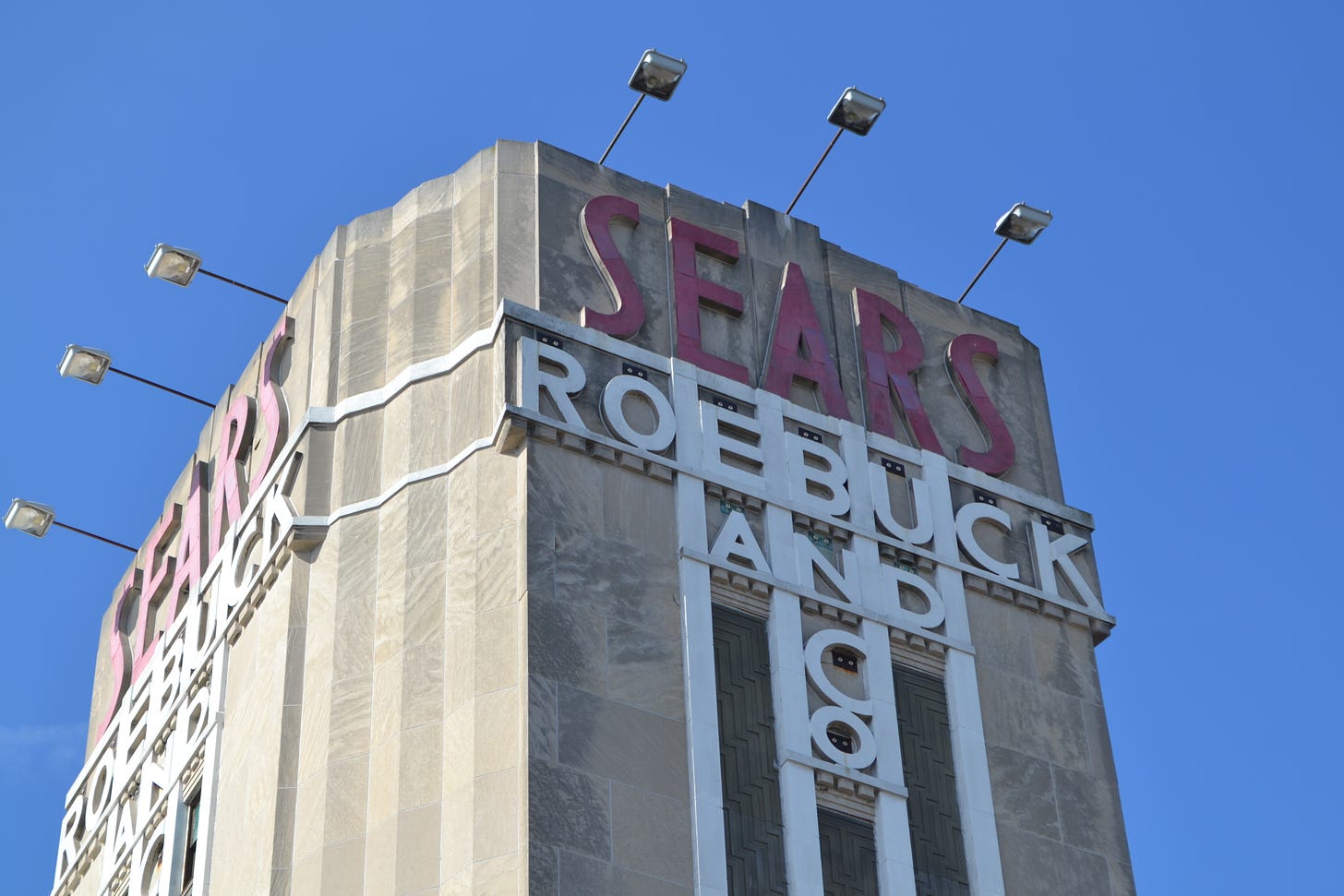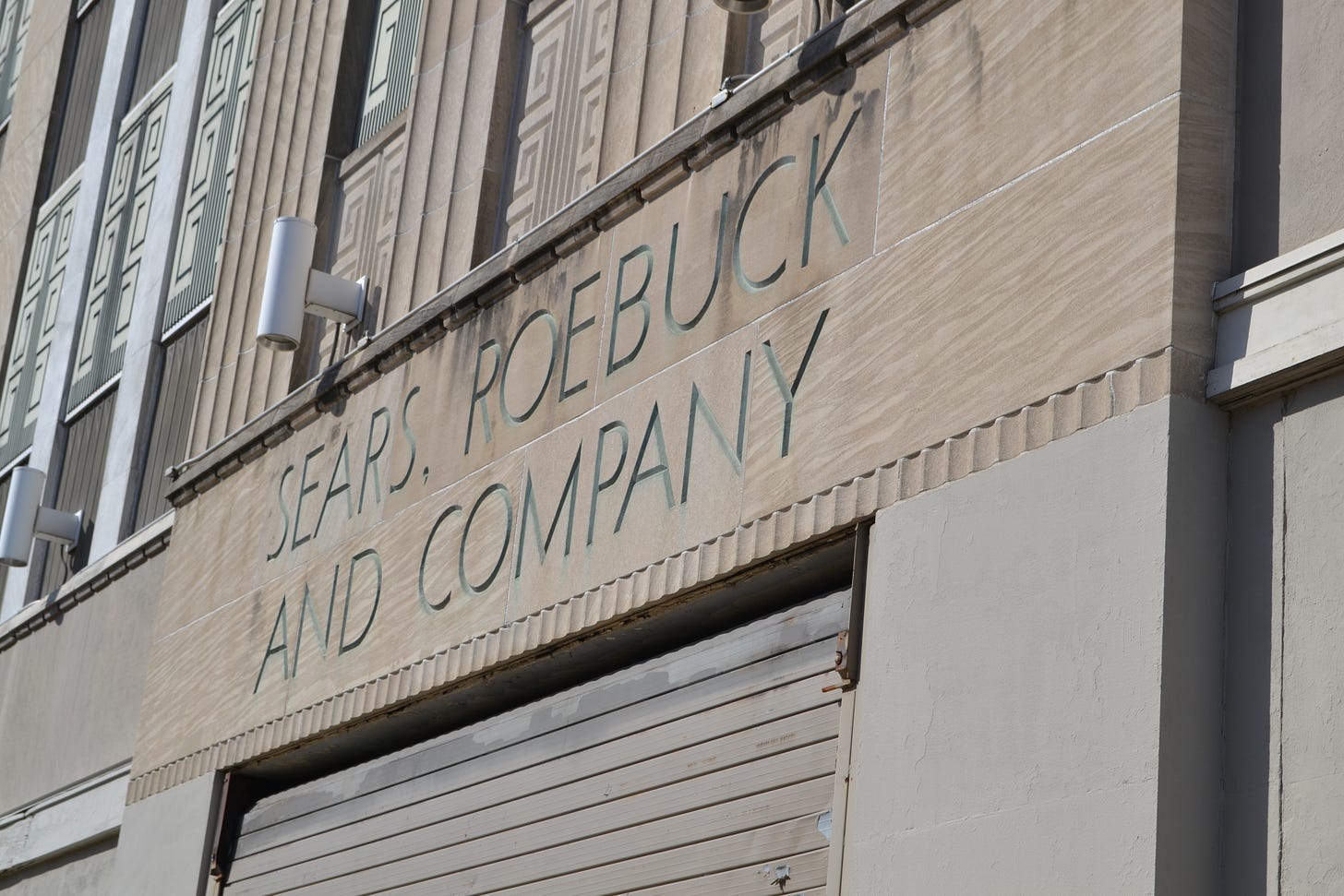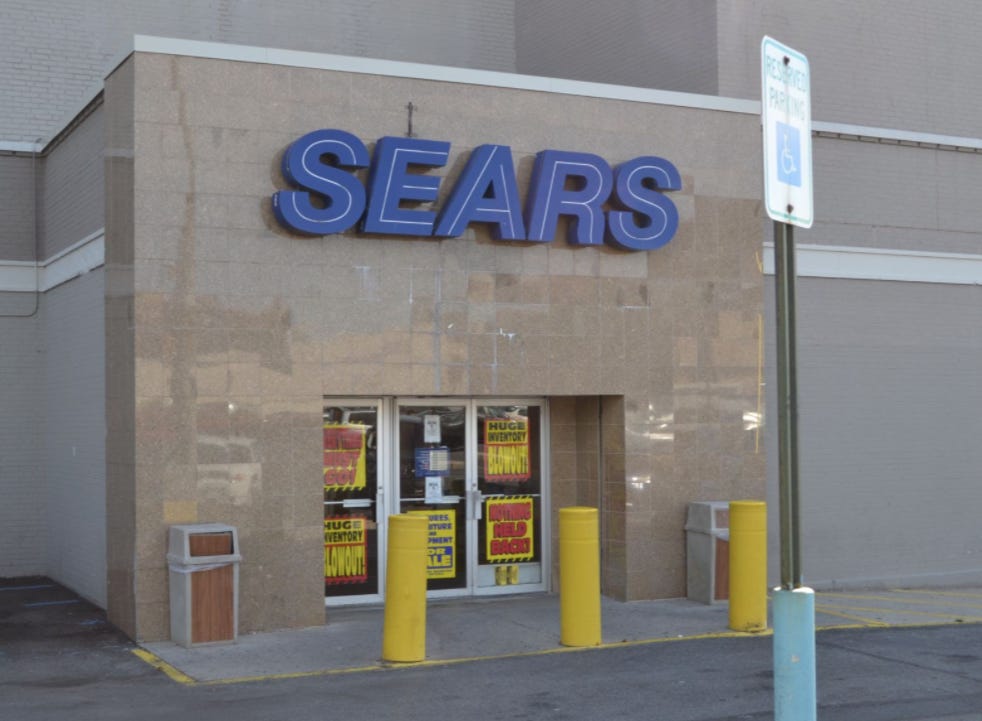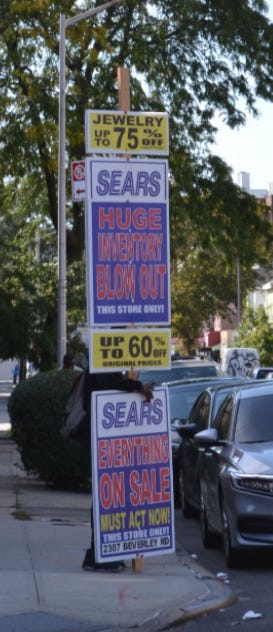In This Week's Newsletter Guy Fieri’s Ghost Restaurant, a Beyoncé Grant in the Bronx and Billboards on Broadway…
This Week’s newsletter was produced by Eliot Schiaparelli, Mariana Labbate, Susanna Granieri, Jenae Barnes, Marlene Cruz, Michael Hoffman, and Isabella Stoller
Ghost Restaurants and Their Scary Implications
You can’t take a trip down to Flavortown, but delivery’s an option. Guy Fieri’s ghost restaurant is one of an increasing and unknowable number of restaurants that operate without a physical location but thrive on food delivery platforms like Uber, DoorDash and Seamless.
Now, Manhattan’s Community Board 6 is taking the first step in an effort to regulate these proliferating operations. During a Sept. 30 meeting, the Board decided to draft a resolution that would create a system to identify and permit these establishments. It would also attempt to take action against the people who run these ghost restaurants and the apps that allow these unpermitted operators to be listed on their platforms.
The decision followed a presentation on ghost restaurants given by Beth Torin, the former executive director for the Office of Food Safety at the New York City Department of Health.
“It’s very scary for the consumer because you don’t know where your food is coming from,” Torin said. “I could be making food from my apartment and nobody would know.”
Ghost restaurants sidestep the traditional overhead of a restaurant. Using one kitchen, multiple brands can operate under the same roof for a fraction of the cost.
The term “ghost” is used because these businesses are difficult to trace. They list their addresses as one place while the food is prepared in another, usually unlisted, location.
This was the case with Flavortown.
“They gave an address of the mall but there was no Flavortown at the mall,” Torin said.
— Michael Hoffman
Beyoncé Grant Boosts Bronx Hip-Hop Cafe
A Bronx Hip-Hop cafe is getting back on its feet after it received a financial boost from the one and only Beyoncé. The Boogie Down Grind, owned by Bronx native and entrepreneur Majora Carter, aims to foster the community and its ventures by hosting events that range from open mics and comedy nights to pop-up markets and financial workshops. The cafe won $10,000 in October 2020 from Beyoncé’s small business impact fund BEYGOOD, which went directly towards building a staple of New York City scenery — a subway car-style outdoor seating area, which opened this summer.
The customer-coined “Hip-Hop Coffee Shop,” which opened in 2007, was forced to shut down in the early months of 2020, like thousands of small businesses, in the wake of the pandemic.
The BEYGOOD grant supports black-owned small businesses. A Federal Reserve Bank of New York report published in August 2020 found that nearly half of the city’s black-owned small businesses were closed down during the pandemic. The report noted that Black businesses tend to have fewer resources to fall back on, and a more difficult time getting aid. This summer, Carter said they wouldn’t have been able to build back their momentum without the grant.
“I really do appreciate her for so many things, but in particular, as a business woman,” she told Essence. “We would not have been able to build what we did without the grant.”
With a menu featuring drinks like “Grant Master Frappe,” “B-Boy Boba Tea” and “Melle Mel Matcha,” every aspect of the cafe refers to the roots and legends of the Bronx’s community.
— Jenae Barnes
Black Bronx Residents Hit Hardest by COVID-19, Report Says
The U.S. Department of the Treasury launched the $25 billion Emergency Rental Assistance Program (ERAP) in January. The program aims to provide economic assistance to those unable to pay rent and utilities due to COVID-19.
Data collected by ERAP shows that most applicants in New York are Black/African-American. According to the report, as of Sept. 14, 45.9% of New York State's total applications came from this group. Although Black Americans account for 17.6% of the state’s total population, they represent approximately half of all financial aid applicants.
The Bronx emerged as the borough with the most applications, with 35,490 requests through the end of July – about twice as many as Manhattan. Brooklyn had 34,517 applications, the second highest among the boroughs. As of Sept. 22, ERAP has spent about $127 million in the Bronx, covering expenses of less than a third of total applicants.
The borough has been hit hardest by COVID-19. In addition to high ERAP application rates, it has also seen disproportionately high rates of deaths and unemployment during the pandemic.
— Eleonora Francica
Times Square Signs Reflect Broadway’s Confusing Return
The Broadway Theatre stands with its marquees draped in black. The theater most recently housed a revival of “West Side Story” that closed in March 2020 as New York City went into lockdown. On Aug. 9, the show announced it would not return. No production is set to take up residence at The Broadway as of yet.
An outdated billboard advertising “Beetlejuice: The Musical” directs crowds four blocks North to the Wintergarden Theater, which now houses a revival of “The Music Man.”
“Beetlejuice” closed in 2020 and recently announced a return to Broadway next April at the Marquis Theatre, one block in the opposite direction of the billboard’s arrow.
Previews of “Diana: The Musical” are slated to begin November 2, after being forced to close before its official opening last March. The show announced an unprecedented deal with Netflix in August 2020, and users can now watch a filmed version of the production on the streaming service before its New York reopening.
— Willa Rowe
Subscription Furniture is New York City’s Safety Blanket
Commitment is hard for New Yorkers, and they've found the answer in subscription furniture. As pandemic uncertainty has left people unsure of where they will be living or working in the future, furniture rentals have gained popularity. They give customers the option to temporarily furnish their living space in lieu of getting stuck with furniture that may not be suited to their next lease.
Several home retail companies have seen their business increase exponentially as a result. Startups like CasaOne, Feather, and Fernish are the highest valued within the market. Since they all launched in 2017, they’ve raised $77.5 million, $76 million, and $45 million in funding, respectively. Notably, Fernish has reported rentals have risen by 105% for wall decor and 315% for home office furniture, with the other aforementioned furniture subscription companies reporting similar growth.
While these companies launched with an emphasis on sustainability — 9.8 million tons of furniture is disposed of in landfills each year, according to the Environmental Protection Agency — amid the pandemic, their selling point is flexibility.
The rental furniture industry is expected to continue to thrive, with global revenues doubling to $10 billion by 2031, according to market research company Fact.
— Isabella Stoller
Little Italy Community Garden Faces a New Threat
On Sept. 21, the Department of Housing Preservation and Development (HPD) issued a notice of lease termination to the Elizabeth Street Garden, a community garden in Little Italy. HPD and Haven Green, a group of developers, intend to convert the land into office and residential spaces, including affordable housing for seniors.
Why it matters: HPD is the subject of an ongoing lawsuit filed in March 2019 by the Elizabeth Street Garden. The garden’s members aim to stop the development, citing concerns that HPD did not thoroughly evaluate the potential adverse environmental impact of destroying the garden.
“They’re trying to circumvent,” said Joseph Reiver, the garden’s executive director. “Saying that this notice of eviction doesn’t have to do with the lawsuit – it’s ridiculous. We’re hopeful that the court will respond in a way that acknowledges that.”
The response: Lawyers representing the garden are asking for the notice to be rescinded until a final decision is made by the New York State Supreme Court.
When contacted about the decision to send a notice of eviction, HPD told Rentwire, “We have worked diligently to strike a balance between the need for low-cost housing for seniors with maintaining New York’s vibrant open spaces.”
The department added that it recently negotiated with the neighboring site, the Little Italy Restoration Apartments, to increase public green space in the development plans.
As of October 3, more than 20,000 letters have been sent to local representatives and HPD in favor of the garden. The Elizabeth Street Garden coalition continues to urge the city to look into alternative housing sites proposed by the community.
“The city places its bets on people getting tired and fizzling out, and not showing up time and time again,” said Reiver. “But people are going to show up nonstop.”
— Shannon Rose Geary
The Repercussions of FEMA's Outdated Flood Maps
The Federal Emergency Management Agency (FEMA) first introduced Flood Insurance Rate Maps (FIRMs) in 1983. The maps determine which parts of cities are at risk of flooding and whether or not homeowners should purchase flood insurance. The problem? The maps were last updated in 2007.
In recent years, proposed updates have been published, but most have not had any impact on the ground. That is because for a period of time, updates are considered "preliminary data” that can be reviewed and contested before becoming permanent. Until they do, those maps cannot influence flood insurance policies or enforce mandatory purchase requirements, according to FEMA.
In 2015, following Hurricane Sandy, FEMA proposed updated maps in New York City. The city filed an appeal, arguing that, among other things, the agency’s map inflated the flood zones by over 30 percent, which would force many residents to purchase unnecessary flood insurance.
A new FEMA map isn’t set to be released until 2024.
Why it matters: When Hurricane Ida hit New York City in September, several areas that suffered damages were not designated as flood zones in FEMA maps, so many residents were not covered at all and had to bear the brunt of recovery costs. Many may not be able to afford such costs, particularly those in low-income areas, such as certain neighborhoods in Queens that were hit hardest by Ida.
— Mariana Castro
Temporary Flood Walls Demonstrate a Barrier Between High and Low Income Communities
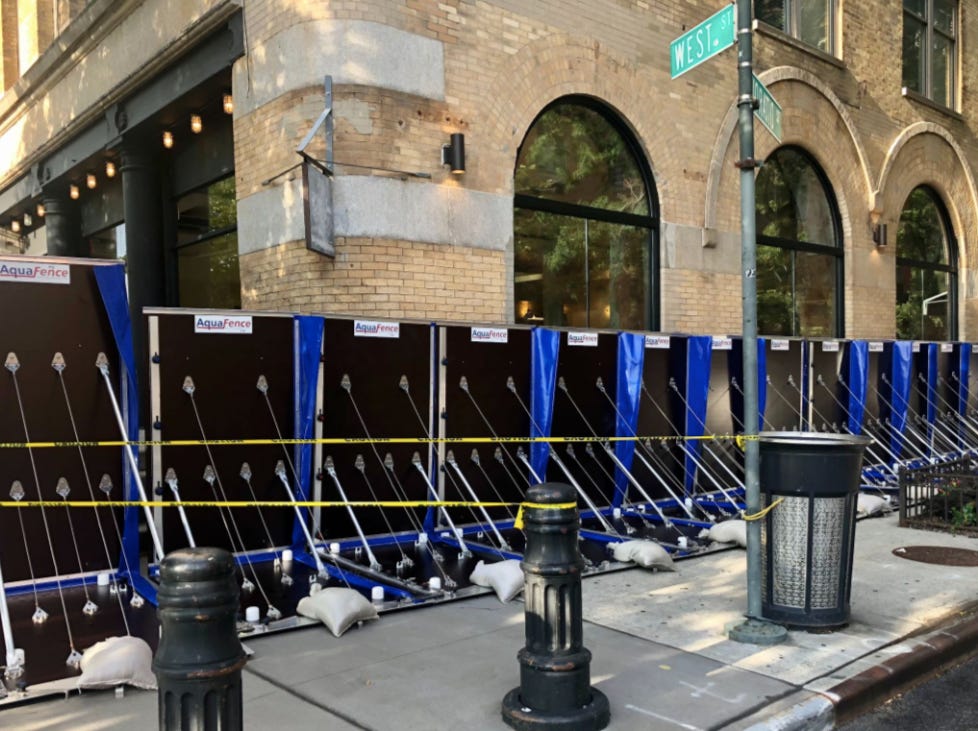
When Hurricane Henri brought record rainfall and severe flooding to New York City in late August, Barbuto, an upscale restaurant near the West Village waterfront, avoided damages thanks to an AquaFence flood wall. The mobile flood walls are a recent infrastructure trend used to safeguard the city’s luxury real estate as climate change increases flooding. Similar products include Nilex, NOAQ, Nofloods and TrapBag. According to AquaFence and its distributor Bluemont, the company’s flood systems have protected $30 billion worth of real estate in the United States, including 30 properties in Lower Manhattan.
How it works: According to testing done by International Water Power & Dam Construction, a trade publication, 10 people can assemble a 100-meter AquaFence flood wall in one hour. One section of walling can replace about 900 sandbags. The downward pressure created by flood water helps stabilize and strengthen the wall.
Who uses it: AquaFence’s clients in New York City include The Port Authority of New York and New Jersey, LaGuardia Airport, MTA Bridges and Tunnels, Hudson Yards, and several high-end developers.
About the company: AquaFence was founded in 1999. The base of the company’s flood walls were designed by Thor Olav Rørheim, a Norwegian inventor, and have been in production since 2005. The company’s competitors include Nilex, NOAQ, Nofloods, and TrapBag.
Why it matters: Private access to temporary infrastructure solutions like mobile flood walls could reveal a socioeconomic divide in how New York City’s neighborhoods navigate the consequences of climate change.
— John Gallen
COVID Deals and Apartment Steals Come to an End
Why was rent so low? Between March and November of 2020, 300,000 New Yorkers left the city, according to data obtained by The New York Post from the U.S. Postal Service. This mass exodus left landlords scrambling to fill empty units across the five boroughs.
Why did it rebound? Bottomed-out market prices brought back some New Yorkers who left, as well as an influx of new New Yorkers. This influx, as well as the reopening of the increasingly-vaccinated city, has led to substantial price increases in Manhattan, Brooklyn, the Bronx and Queens. According to a StreetEasy median rental report, Manhattan’s rent plummeted to $2,800 in October 2020, but as of August, it sits at $3,100, a 10.7% increase.
How much is the increase? Between August 2020 and August 2021, the cost of rent increased by an average of 27% across these five Manhattan neighborhoods.
Manhattan neighborhoods were not the only ones to see this consistent uptick in pricing, as Brooklyn’s Greenpoint, Prospect Heights and Williamsburg neighborhoods all showed a minimum of a 9% increase, with Williamsburg’s median rent increasing by 21.8%.
What happens to residents? Claire Smith, 24, moved from Los Angeles to the West Village in November because of the reduced rents. Now, her lease renewal for her two-bedroom apartment shows a 14% rent increase, from $3,500 to $4,000.
“I’m hoping that things start looking a little bit better mid-October,” Smith told Bloomberg. “I have nothing set in stone — except for the fact that I’m moving out.”
— Susanna Granieri
Rent Check! Upper East Side ✅
The Upper East Side is a neighborhood filled with museums and parks—and currently 926 apartments for rent on StreetEasy.
While the neighborhood’s median rent hovered around $2,400 this summer, according to StreetEasy, a search for a two-bedroom apartment could lead to wildly different worlds. The cheapest and most expensive 2 bedroom apartments listed on StreetEasy on the Upper East side currently have a $29,705 price difference.
Let’s look at what’s currently on the market:
Just a few steps away from the 72nd street N, Q, R line, the cheapest two-bedroom apartment for rent in the Upper East Side, listed on StreetEasy as of Oct. 6, is listed at $2,295. This apartment has two full-sized bedrooms, a small living room, and laundry in the building.
Just six blocks north, the most expensive two-bedroom apartment currently for rent in the Upper East Side is listed at $32,000. The master bedroom is the entire upper level of the apartment. This bedroom includes a dressing area and an interior balcony which leads to the upper terrace, according to StreetEasy.
— Marlene Cruz
Chinatown Residents Protest Plans for a New Jail in Lower Manhattan
In September 2020, the Manhattan Supreme Court decided to halt Mayor Bill de Blasio’s plan to build a new jail tower in Chinatown, ruling in favor of a local group. Despite resistance from the community, a four-judge panel of the Appellate Division’s First Department overturned the decision in March. Now, twice a week, Chinatown residents are protesting in front of the Museum of Chinese in America against the proposed jail construction.
The new Chinatown jail is part of the city’s $8.7 billion plan to close Rikers Island and replace it with a smaller network of jails across the city. The project would demolish the Manhattan Detention Complex at 124 White Street and build a new, larger jail. Construction is set to begin later this year and will be completed by 2027.
Under de Blasio’s vision, the jail plan represents a collective effort to reform the city’s criminal justice system. The mayor believes the new Chinatown jail, along with the others, would create “a smaller jail population, safer facilities, and fairer culture inside.”
Members of Neighbors United Below Canal, who filed the lawsuit, argued that the project ran afoul of local zoning ordinances and failed to take into account possible environmental impacts. Residents feared that the jail would crowd an already congested neighborhood, leading to higher rents in the area and the displacement of low-income tenants.
— Xinyi (Wendy) Wang
Historical Church, Powerhouse Developer: A Brief History of Harlem’s Abyssinian Development Corporation
The Abyssinian Baptist Church has been at the intersection of religious and economic development in Harlem for more than 100 years.
The church was built in 1922-23 and has drawn prominent pastors such as Adam Clayton Powell Jr. and Raphael Warnock. Its current pastor, Reverend Calvin O. Butts III, created the Abyssinian Development Corporation (ADC) in 1987 in an effort to boost strong community relations.
For more than two decades, Abyssinian has owned or developed upwards of $500 million worth of property in Harlem — including more than 1,500 affordable housing units, two public schools and shopping centers.
Many residents have criticized Butts’ organization, saying it resembles the real estate corporations driving a redevelopment boom in the neighborhood. In the past decade, more than 24 churches in Harlem have been razed or redeveloped into housing units. Yet, ADC has continued to prosper, working closely with large and locally-involved developers, including BRP Companies and Genesis Companies.
Critics have also alleged that ADC has a favorable attitude toward chain stores over small businesses, citing Harlem Center, its $85 million retail and office complex on 125th street.
Despite its business successes, Abyssinian’s history is speckled with legal issues. City records show that the church has had several outstanding building violations since the 1990s, including peeling lead paint, a lack of hot water and apartments overrun by rodents. A lawsuit was filed in 2020 against a Deacon who allegedly defrauded several church members of $200,000 dollars over a period of at least seven years.
— Richa Karmarkar
The Legacy of Sears Ends in NYC
The last Sears department store in New York City is closing its doors on Nov. 24, after serving the Flatbush community since 1932. The building and its huge “Sears” sign, however, will remain standing. The city granted it landmark status in 2012, calling it “an impressive late example of the Art Deco style,” according to official documents from the Landmarks Preservation Commission.
The department store filed for bankruptcy in 2018, and now most of its shares are held by the shopping platform Transformco. Before it went bankrupt, the company had over 600 stores in 50 U.S. states and Puerto Rico.
It is not clear what the future holds for the landmark location. “We intend to reinvigorate and maximize the value of the real estate to meet the needs of the Brooklyn market,” Transformco told The City in a statement.
In its last days, the store is holding big sales, with signs all around the block between Beverly Road and Bedford Avenue that read “Huge Inventory Blow Out” and “This Store Only!”
— Mariana Labbate




